Aquatic architecture is redefining the art of outdoor design, leveraging the aesthetic, functional, and ecological benefits of water for creating impactful infrastructures that resonate and leave a lasting impression.
From luxurious infinity pools to tranquil garden fountains or artificial lagoons, water-based architectural structures are capable of elevating landscapes and transforming them into immersive sensory experiences.
This article sheds light on the vital role of water in modern landscaping and the importance of adequate aquatic design to elevate projects, as well as how architectural principles combine with water to transform outdoor spaces into extraordinary environments.
Dive deeper with the eBook
Why aquatic architecture matters: the symbolic and social role of water in creating dynamic landscaping projects
Whether it’s the rhythmic splash of a fountain or the stillness of a glassy pool, water speaks to a primal part of the human experience.
Across time and space, water features have been capable of evoking emotion and creating memories, becoming a life-giving presence capable of lowering stress levels and improving mental health.
As such, when incorporated into landscape design, projects benefit from the unique symbolic, emotional, and ecological significance of water.
Water introduces a number of attractive features to any project, from motion and sound to light reflections and cooling effects. As such, as part of modern landscaping initiatives, water is more than a decorative feature, it’s a critical element that enhances ambiance and promotes relaxation.
What’s more, it can be incorporated into landscaping for distinct effects: in public spaces, water fosters social interaction and engagement, whereas in private settings, it can offer an intimate retreat from the stresses of daily life.
As part of urban environments, aquatic architecture leverages water to improve microclimates, reduce heat islands, and provide community-building benefits.
In these urban contexts, well-designed water features can mitigate the harshness of concrete and steel, offering visual relief and natural harmony, while also supporting biodiversity. Meanwhile, when it comes to residential and hospitality settings, aquatic elements elevate property value and create leisure spaces that invite serenity.
Aquatic architecture, therefore, is not merely a design discipline: when conceived well, water can turn into an unparalleled conduit for wellness and connection, and promote a unique transformation of spaces.
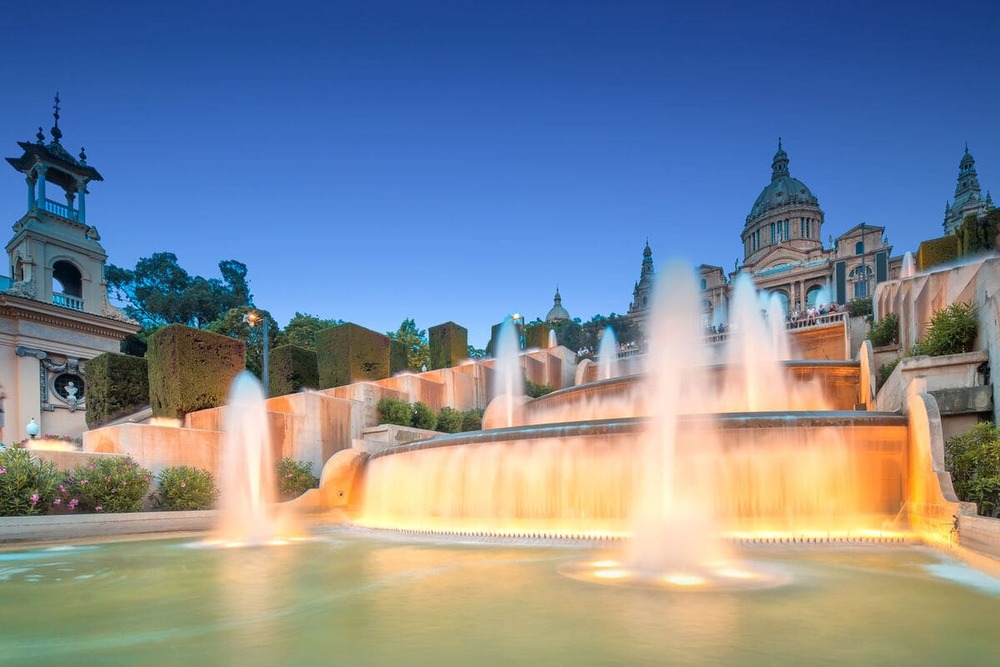
The principles of aquatic architecture design
Successful aquatic architecture projects adhere to a few core design principles that manage to achieve a balance between functionality and aesthetic value:
Harmonization with the environment
The best aquatic features feel like natural extensions of their surroundings. In order to achieve this, designers must consider notions around the site’s specific topography, climate, and existing landscape.
Aiding in achieving this harmonization are naturalistic designs, which include organic shapes, native vegetation, and materials that age gracefully over time. However, spaces that aim at creating a more modern look can opt for displaying straight, clean edges and a more minimalist approach.
Sustainability and water management
Adequate water treatment systems are essential in modern aquatic design. Through arrangements such as closed-loop systems, rainwater harvesting, and efficient filtration and recirculation, it’s possible to reduce a feature’s environmental impact.
Meanwhile, designers can opt for including native aquatic plants and biological filtration systems, which maintain water quality while supporting local ecosystems.
User experience and accessibility
Another key principle in aquatic architecture is ensuring these water-based features serve all users.
A number of solutions can be implemented to achieve this: from zero-entry pools to shallow play areas and shaded seating, it’s about enhancing user experience and broadening the feature’s appeal to people from different age groups and abilities. A non-negotiable in order to maximize the potential of aquatic spaces to become true social, community-building spots.
Technological integration
Smart technologies are increasingly integrated into aquatic architecture, with connected pools reshaping the possibilities of aquatic facilities.
From automated lighting, to temperature control, remote maintenance systems, and energy monitoring, technological advancements are being employed to enhance usability and efficiency in water features. A tech-forward approach that allows property owners to manage complex facilities with ease.
The 4 essential spaces of aquatic architecture in landscaping
Aquatic architecture encompasses the design and integration of water features using both architectural and landscape principles. A discipline in its own right, its goal is to blend man-built structures with nature in a seamless, sustainable, and visually captivating way.
Within this discipline, the primary options for outstanding aquatic architecture in landscaping today include:
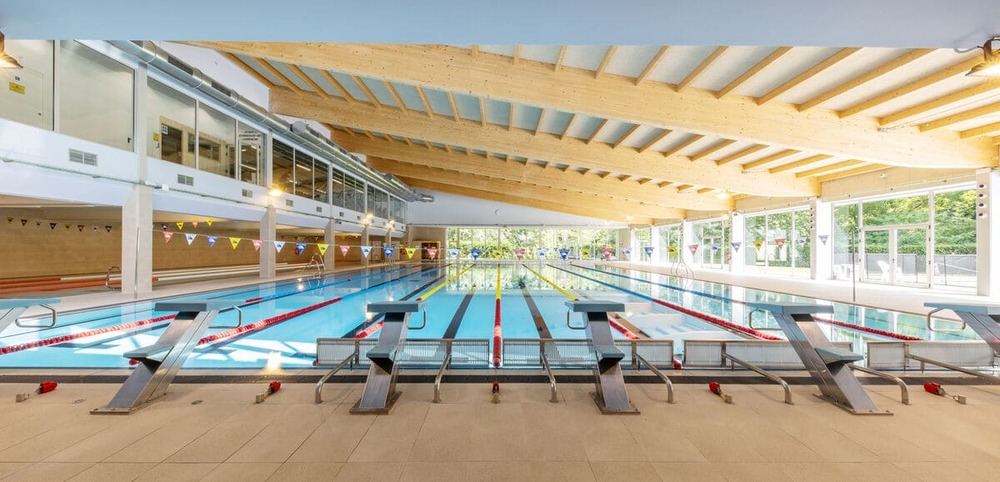
1. Swimming pools
Often the centerpiece of aquatic architecture in both residential and commercial landscapes, swimming pools not only offer recreation opportunities, but also serve as social hubs and visual focal points.
Current trends in aquatic architecture emphasize minimalism, geometric shapes, and the use of natural materials like stone and wood. Infinity edges, reflecting pools, and vanishing boundaries create illusions of continuity with the surrounding landscape, enhancing visual depth and sophistication.
But well-designed pools not only consider aesthetics but also those aspects related to circulation, lighting, energy efficiency, and safety.
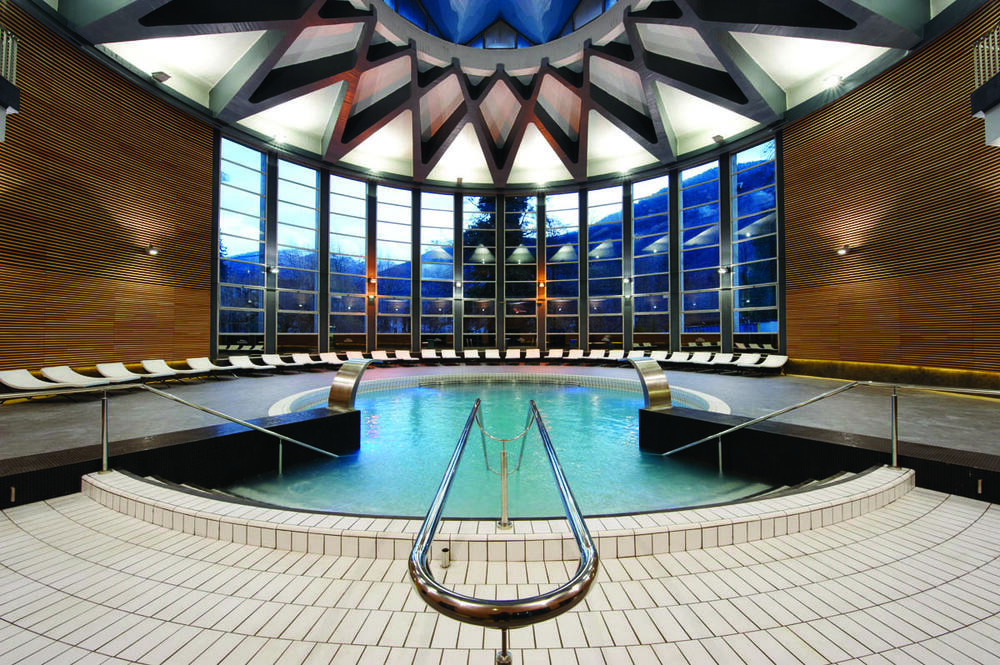
2. Wellness spaces
Spas and wellness spaces incorporate a therapeutic perspective into the broader notions of aquatic architecture. As such, these spaces prioritize issues like comfort and sensory experiences in order to design unique water-based therapies, whether the setting integrates with an adjacent swimming pool or it is conceived as a standalone wellness-focused environment.
Architectural details such as built-in seating, textured tiling, and ambient lighting contribute to these spaces’ overall design and goal of supporting relaxation and health. When possible, the incorporation of natural surroundings (such as waterfalls, greenery, and shading structures) enhances the restorative nature of spas.
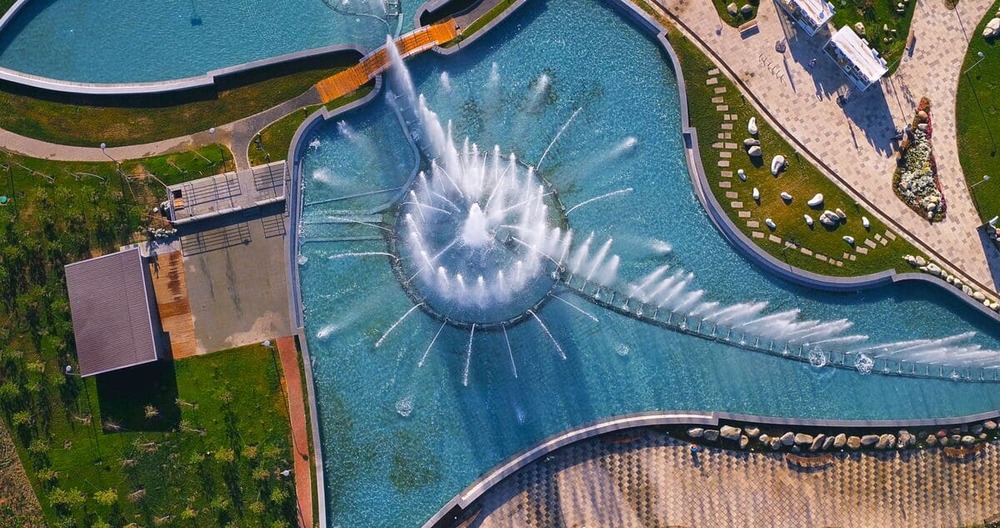
3. Fountains
Fountains, cascades, and waterfalls add a unique dynamic layer to landscapes, bringing movement and auditory stimulation while also providing a cooling effect. Whether classical, modern, or abstract, fountains can be designed to be timeless ornamental installations. However, they can also be designed to promote interaction, inviting human engagement and thus becoming a focal point in public spaces such as squares, gardens and parks. When strategically placed, fountains can also mask undesirable noise from urban environments and create a tranquil oasis within busy areas.
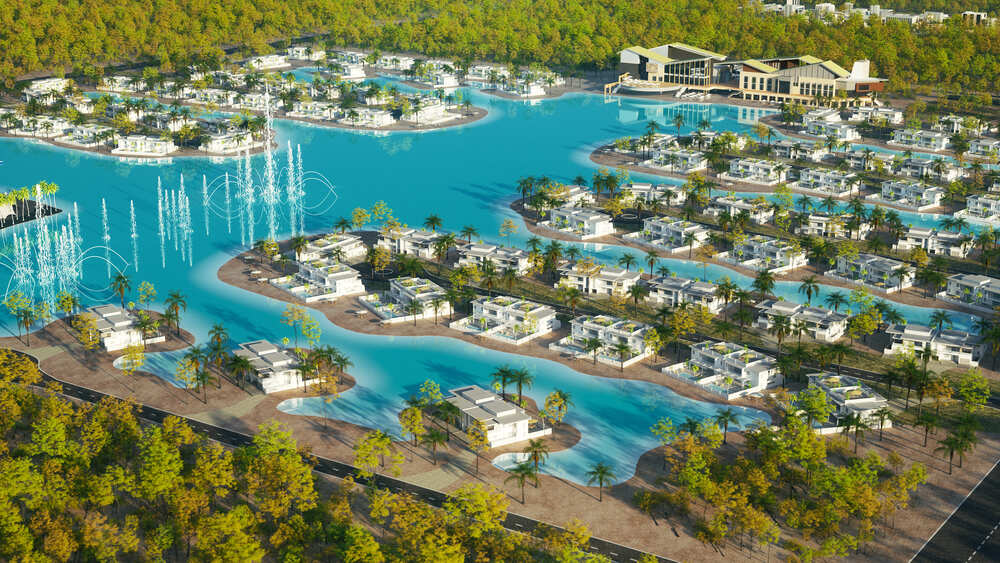
4. Artificial lagoons and lakes
Artificial lagoons are aquatic architecture at a grand scale. These vast, man-made bodies of water mimic natural beaches or natural lakes and offer a range of ornamental and recreational possibilities.
Whether integrated into real estate developments, and public parks, lakes and man-made lagoons transform ordinary landscapes into secluded retreats and dreamlike locations.
As to their part in resorts, lagoons have become a key trend for elevating hospitality businesses and offering unique, differentiated guest experiences.
All in all, a well-executed artificial lagoon has the potential of becoming a community focal point that supports tourism, leisure, and real estate growth.
However, it’s important to note that designing a lake or lagoon involves advanced engineering and environmental planning, including technologies like efficient filtration systems, water disinfection, and uniform recirculation are vital.
FAQs about aquatic architecture
What is a water body in architecture?
The European Environmental Agency defines a water body as “a certain clearly distinguishable part of surface water, such as a lake, a stream, river or a part a stream or river”.
When looking at the specific implications of water bodies in architecture, a water body refers to any intentional incorporation of water features within a built environment.
In this context, a distinct discipline emerges: aquatic architecture, in which water-based elements are integrated within built environments whether for aesthetic, functional, environmental, or recreational purposes.
What does water symbolize in architecture?
Water is fundamental to life and is thus deeply intertwined with the human experience, having captivated our symbolic imagination across millenia.
Existing in many forms and as a uniquely dynamic and fluid element, it has carried a strong symbolic meaning for different cultures. As such, the inclusion of water in architecture often serves not only a functional purpose but also conveys a deeper cultural significance.
Depending on the context, water symbolism in architecture can evoke:
- Associations with purity and cleansing, as best illustrated by rituals such as the Christian baptism or the spiritual life tied to sacred rivers such as the Ganges.
- References to transformation, inspired by water’s fluid nature and as seen in Japanese gardens that incorporate water as a symbol for impermanence and eternal renewal.
- Some cultures also relate water to prosperity, as this element has been a crucial life-giving force in cultures such as Ancient Egypt.
Aquatic architecture: a transformational discipline for your landscaping project
As landscaping evolves into becoming a multidisciplinary and holistic discipline, aquatic architecture stands at the intersection of form, function, and feeling.
Fusing design ingenuity with the timeless allure of water, state-of-the-art aquatic architecture manages to create spaces that captivate and inspire, from sleek rooftop spas to expansive lagoons. As such, it’s a crucial step not only for beautifying any landscape, but also to redefine how we interact with our surroundings.
Aquatic architecture can elevate any landscaping project from ordinary to extraordinary. However, it’s crucial to work with experienced designers and engineers from the start to ensure the resulting water feature is not just beautiful, but sustainable, functional, and perfectly tailored to the site’s environment.
With projects in more than 87 countries and as a global leader in the pool industry, at Fluidra we put our aquatic design and engineering at the service of our clients. Take a look at our commercial solutions and discover our role as allies in the aquatic architecture projects of the future.
